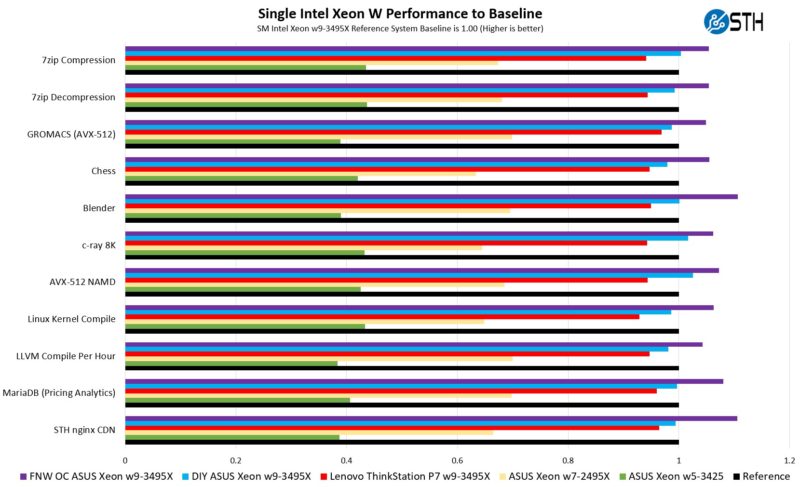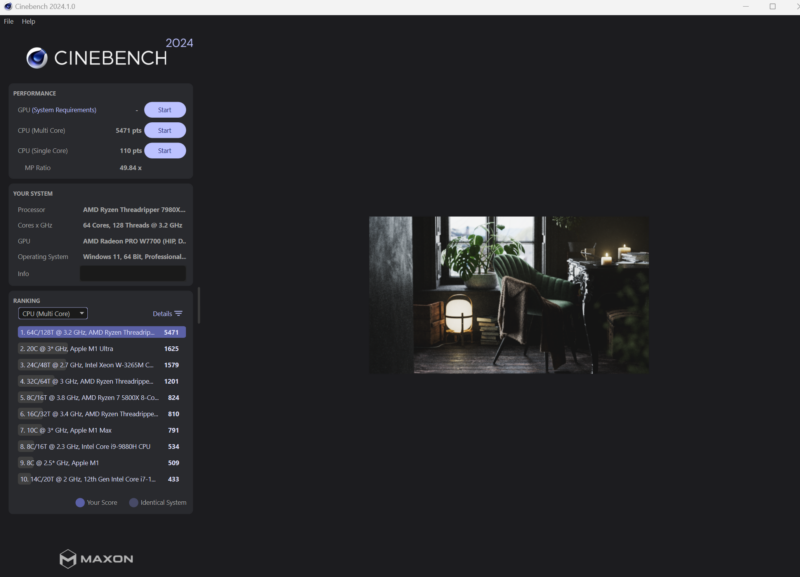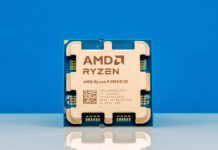AMD Ryzen Threadripper 7980X Performance
For folks who have not heard, STH has been moving to Scottsdale, AZ. The studio gear just arrived in Arizona from Texas. Over time, that will give STH a huge production capacity. The cost of this is near-term chaos doing content. Still, there was one finding that we wanted to get to before moving on and that is how the same configuration can perform wildly differently.

Again, for this, we are using the build shown earlier including the AMD Ryzen Threadripper 7980X, ASUS Pro WS TRX50-SAGE WiFi, G.Skill Zeta R5 Neo DDR5-6400 128GB kit (4x 32GB), Hyte Y60 (Amazon Affiliate), a NZXT Kraken 360 liquid cooler (Amazon Affiliate), WD Black SN850X SSDs (Amazon Affiliate), and the recently launched AMD Radeon Pro W7700 16GB ECC GPU. Most of these were provided by AMD in conjunction with the vendors since we were testing before the official launch of the chips. We also used a NVIDIA RTX 6000 Ada GPU for some of our testing to align it with other systems we have tested recently.
Let us get to the key finding, and we are going to do this in four Cinebench R23 screenshots. After we installed the CPU and memory, we installed the latest BIOS from ASUS and did a CMOS clear. We then turned on the platform. Windows 11 Pro happily installed, and we got a Cinebench R23 score of 97,163.

At this point, we thought since we had AMD EXPO G.Skill memory we should go back into the ASUS BIOS and set the memory to EXPO settings. Upon a reboot, we were at 75,527.

That seemed not great. Instead, we went into the BIOS and used the ASUS AI Overclocking feature. The reboot here took a bit longer, but it was one BIOS setting. With a simple change, and over 740W of power draw at the wall, our result was a 118,589 run. 740W might seem like a lot, but a 56-core Intel Xeon w9-3945X hitting over 100K will use over 1kW at the wall.

One item to note here is that the MP Ratio for single to multi-core scaling increased dramatically. We went from a low of around 64% to over 98% by just using the one-button ASUS overclock feature.
That 118,589 was surprising to say the least. We tested the Dell Precision 7875 with the AMD Ryzen Threadripper Pro 7995WX and only got 100,764. That was after a re-do since our initial scores were much lower.

If you saw our building 3x Intel Xeon W-3400 Workstation and Servers with the ASUS Pro WS W790E SAGE SE series, and our Falcon Northwest RAK Intel Xeon W-3400 Unleashed Edition review, you may have noticed a pattern.
There is a huge divergence in traditional OEM system performance versus DIY or boutique performance. We put that on a chart just to make it pop for folks.

To make this a bit more clear, the top scores on Cinebench R23 for a AMD Ryzen Threadripper Pro 7995WX fall into the 160K range, and Cinebench R23 is one of the render tasks that is most well suited to the high core count parts. Workstations from major OEMs are commonly seeing 40-50% lower performance than their more bespoke counterparts on simple tests so this is not common.
Here is the strange part: a $180 liquid cooler with an ASUS motherboard’s one-click OC features now yields ~18% faster performance than the Dell system with the “Pro” CPU with twice the memory channels and 50% more cores.

This is actually expected. Large OEM Workstations (HP, Lenovo, Dell) usually use very conservative power limits to utilize lower-cost air cooling. Companies like ASUS make the more bespoke motherboards capable of higher power delivery. With proper cooling, power limits increase thereby increasing the performance per core. We have seen this for generations now. Some other sites had access to the Dell Precision 7875 and effectively called it the best thing since sliced bread. Keep that in mind when reading reviews.
For the performance side, let us take a quick look at what we saw in our Linux test suite:

The interesting part here is that Intel has a core count deficiency but has twice the memory bandwidth. At less than $900 more, if you are memory bandwidth bound, either the Intel w9-3495X or Threadripper Pro platform is going to be a better option. Also, there are applications that are primarily GPU-heavy, and we saw Intel do very well in those. Still, AMD is extremely competitive now.
We are fairly sure many others are going to have Windows benchmarks.

Still, using this for a day, the real difference is in those heavy computational tasks.
Next, let us get to power consumption and our final words.




I agree with you about the segmentation, it is not very nice of AMD. Perhaps AMD fears that reasonably priced full fat TR would canabilize the EPYC market.
Then again let’s wait for mobos. It looks like there will be a lot of PCIe4 lanes available. 3 slots x16 PCIe5 if augmented by a bunch of x8 or x16 PCIe4 slots isn’t terrible.
The segmentation is perfectly fine. Lots of professionals just need more PCIe lanes than Ryzen/Core provide, and absolutely can’t afford 64, 96 or 128 cores. The 24 cores part is just great to get above the consumer ground, and four memory channels are more than enough for that.